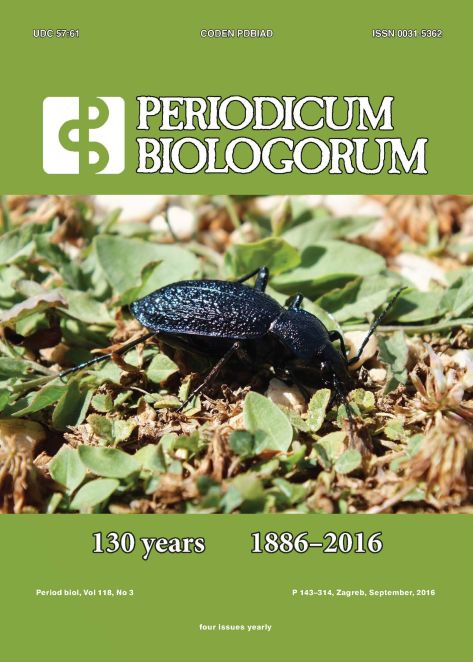Recovery of surface-dwelling assemblages (Coleoptera: Carabidae, Staphylinidae) during clear-cut originated reforestation with native tree species
Abstract
Background and purpose: Timber-oriented forest management has an important impact on biodiversity in forest ecosystems. Recovery dynamics of two groups of beetles (Coleoptera: Carabidae, Staphylinidae) were studied after reforestation with native English oak (Quercus robur). We expected that reforestation with heavy site preparation causes a shift in the diversity of surface-dwelling beetles in early phases of reforestation. Moreover, we tested the habitat specialist hypothesis, assuming that diversity of forest specialist species will be lower in early phases with open canopy than later phases of reforestation after the canopy closure.
Materials and methods: We compared litter sifter samples among mature (130-year-old) oak forest, and recently established (5-year-old), young (15-year-old), middle-aged (45-year-old) reforestations.
Results: Our results showed that diversity of ground beetles was the highest in the recently established reforestation, while it was the lowest in the mature oak forest. Contrarily, diversity of rove beetles was the lowest in recently established reforestation and it was the highest in the mature oak forest. In agreement with the habitat specialist hypothesis, the diversity of forest specialists of both taxa was lower in the recently established reforestation than in the young and middle-aged reforestations as well as mature forest.
Discussion: Our results suggested that clear-cutting of mature forest, site preparation before reforestation and cultivation by light tilling in early phases of reforestation have detrimental effects on forest specialist rove beetles and ground beetles. However, reforestation with native species could be a feasible management method in pannonic mesophile sand steppe, because forest specialist species can recover after the canopy closure.
Downloads
Additional Files
Published
Issue
Section
License
The contents of PERIODICUM BIOLOGORUM may be reproduced without permission provided that credit is given to the journal. It is the author’s responsibility to obtain permission to reproduce illustrations, tables, etc. from other publications.


